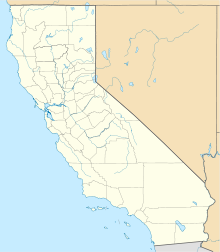
Europium is a chemical element with the symbol Eu and atomic number 63. Europium is the most reactive lanthanide by far, having to be stored under an inert fluid to protect it from atmospheric oxygen or moisture. Europium is also the softest lanthanide, as it can be dented with a fingernail and easily cut with a knife. When oxidation is removed a shiny-white metal is visible. Europium was isolated in 1901 and is named after the continent of Europe. Being a typical member of the lanthanide series, europium usually assumes the oxidation state +3, but the oxidation state +2 is also common. All europium compounds with oxidation state +2 are slightly reducing. Europium has no significant biological role and is relatively non-toxic compared to other heavy metals. Most applications of europium exploit the phosphorescence of europium compounds. Europium is one of the rarest of the rare earth elements on Earth.
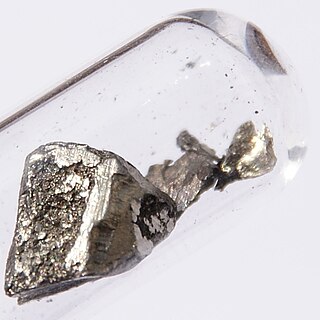
Lanthanum is a chemical element with the symbol La and atomic number 57. It is a soft, ductile, silvery-white metal that tarnishes slowly when exposed to air and is soft enough to be cut with a knife. It is the eponym of the lanthanide series, a group of 15 similar elements between lanthanum and lutetium in the periodic table, of which lanthanum is the first and the prototype. It is also sometimes considered the first element of the 6th-period transition metals, which would put it in group 3, although lutetium is sometimes placed in this position instead. Lanthanum is traditionally counted among the rare earth elements. The usual oxidation state is +3. Lanthanum has no biological role in humans but is essential to some bacteria. It is not particularly toxic to humans but does show some antimicrobial activity.
The lanthanide or lanthanoid series of chemical elements comprises the 15 metallic chemical elements with atomic numbers 57–71, from lanthanum through lutetium. These elements, along with the chemically similar elements scandium and yttrium, are often collectively known as the rare earth elements.

Ore is natural rock or sediment that contains desirable minerals, typically metals, that can be extracted from it. Ore is extracted from the earth through mining and refined, often via smelting, to extract the valuable element or elements.
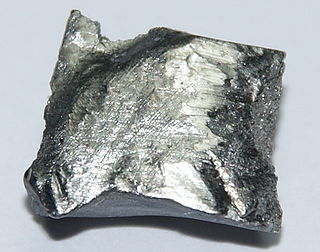
Terbium is a chemical element with the symbol Tb and atomic number 65. It is a silvery-white, rare earth metal that is malleable, ductile, and soft enough to be cut with a knife. The ninth member of the lanthanide series, terbium is a fairly electropositive metal that reacts with water, evolving hydrogen gas. Terbium is never found in nature as a free element, but it is contained in many minerals, including cerite, gadolinite, monazite, xenotime, and euxenite.

A rare-earth element (REE) or rare-earth metal (REM), as defined by the International Union of Pure and Applied Chemistry, is one of a set of seventeen chemical elements in the periodic table, specifically the fifteen lanthanides, as well as scandium and yttrium. Scandium and yttrium are considered rare-earth elements because they tend to occur in the same ore deposits as the lanthanides and exhibit similar chemical properties, but have different electronic and magnetic properties. Rarely, a broader definition that includes actinides may be used, since the actinides share some mineralogical, chemical, and physical characteristics.
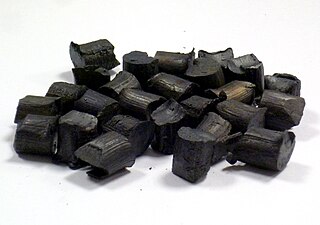
Mischmetal (from German: Mischmetall – "mixed metal") is an alloy of rare-earth elements. It is also called cerium mischmetal, or rare-earth mischmetal. A typical composition includes approximately 55% cerium, 25% lanthanum, and 15-18% neodymium with other rare earth metals following. Its most common use is in the pyrophoric ferrocerium "flint" ignition device of many lighters and torches, although an alloy of only rare-earth elements would be too soft to give good sparks. For this purpose, it is blended with iron oxide and magnesium oxide to form a harder material known as ferrocerium. In chemical formulae it is commonly abbreviated as Mm, e.g. MmNi5.
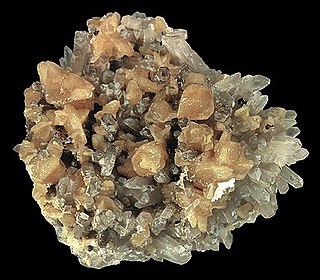
Monazite is a reddish-brown phosphate mineral containing rare-earth metals. To be more specific, it represents a group of minerals. The most common species of the group is monazite-(Ce), that is, the cerium-dominant member of the group. It occurs usually in small isolated crystals. It has a hardness of 5.0 to 5.5 on the Mohs scale of mineral hardness and is relatively dense, about 4.6 to 5.7 g/cm3. There are at least four different "kinds" (actually separate species) of monazite, depending on relative elemental composition of the mineral:

The mineral bastnäsite (or bastnaesite) is one of a family of three carbonate-fluoride minerals, which includes bastnäsite-(Ce) with a formula of (Ce, La)CO3F, bastnäsite-(La) with a formula of (La, Ce)CO3F, and bastnäsite-(Y) with a formula of (Y, Ce)CO3F. Some of the bastnäsites contain OH− instead of F− and receive the name of hydroxylbastnasite. Most bastnäsite is bastnäsite-(Ce), and cerium is by far the most common of the rare earths in this class of minerals. Bastnäsite and the phosphate mineral monazite are the two largest sources of cerium and other rare-earth elements.

Praseodymium is a chemical element with the symbol Pr and atomic number 59. It is the third member of the lanthanide series and is traditionally considered to be one of the rare-earth metals. Praseodymium is a soft, silvery, malleable and ductile metal, valued for its magnetic, electrical, chemical, and optical properties. It is too reactive to be found in native form, and pure praseodymium metal slowly develops a green oxide coating when exposed to air.

Sillamäe, is a town in Ida-Viru County in the northern part of Estonia, on the southern coast of the Gulf of Finland. It has a population of 13,666 and covers an area of 10.54 km². Sillamäe is located at the mouth of Sõtke River.

Gold extraction refers to the processes required to extract gold from its ores. This may require a combination of comminution, mineral processing, hydrometallurgical, and pyrometallurgical processes to be performed on the ore.

Bayan'obo Mining District,, or Baiyun-Obo or Baiyun'ebo, is a mining town in the west of Inner Mongolia, People's Republic of China. It is under the administration of Baotou City, the downtown of which is more than 120 kilometres (75 mi) to the south.

Yttrium is a chemical element with the symbol Y and atomic number 39. It is a silvery-metallic transition metal chemically similar to the lanthanides and has often been classified as a "rare-earth element". Yttrium is almost always found in combination with lanthanide elements in rare-earth minerals, and is never found in nature as a free element. 89Y is the only stable isotope, and the only isotope found in the Earth's crust.

Cerium is a chemical element with the symbol Ce and atomic number 58. Cerium is a soft, ductile and silvery-white metal that tarnishes when exposed to air, and it is soft enough to be cut with a knife. Cerium is the second element in the lanthanide series, and while it often shows the +3 oxidation state characteristic of the series, it also exceptionally has a stable +4 state that does not oxidize water. It is also considered one of the rare-earth elements. Cerium has no biological role in humans and is not very toxic.
Molycorp Inc. was an American mining corporation headquartered in Greenwood Village, Colorado. The corporation, which was formerly traded on the New York Stock Exchange, owned the Mountain Pass rare earth mine in California. It filed for bankruptcy in June 2015 after changing competitive circumstances, declining prices on output and a 2014 restructuring. It was purchased by its largest creditor Oaktree Capital Management and was reorganized as Neo Performance Materials.
The rare earth industry in China is a large industry that is important to Chinese internal economics. Rare earths are a group of elements on the periodic table with similar properties. Rare earth metals are used to manufacture everything from electric or hybrid vehicles, wind turbines, consumer electronics and other clean energy technologies. The elements are also important to national governments because they are used in the defense industry. Twenty percent of rare earth demands are for use as permanent magnets. Permanent magnets can be used for a variety of applications including serving as essential components of weapons systems and high performance aircraft.

Thor Lake is a deposit of rare metals located in the Blachford Lake intrusive complex. It is situated 5 km north of the Hearne Channel of Great Slave Lake, Northwest Territories, Canada, approximately 100 kilometers east-southeast of the capital city of Yellowknife. Geologically located on the Canadian Shield it is mostly composed of peralkaline syenite. The Blatchford Lake complex was created in the early Proterozoic, 2.14 Ga ago. The deposit is divided in several sub-structures. In a small zone at the northern edge of the syenite, the T-Zone, minerals like bastnäsite, phenakite and xenotime can be found.
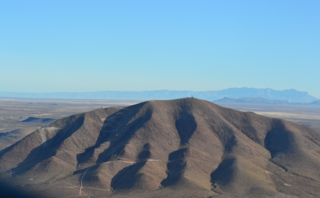
Round Top Mountain is a mountain that lies at the western end of the Sierra Blanca area in Hudspeth County, Texas near the town of Sierra Blanca, Texas. The area includes the Finlay Mountains, Triple Hill, and Sierra Blanca quadrangles as well as parts of the Fort Quitman and McNary quadrangles. Round Top Mountain is known for containing deposits of beryllium as well as the largest deposit of heavy rare-earth elements in the United States.

Regolith-hosted rare earth element deposits are rare-earth element (REE) ores in decomposed rocks that are formed by intense weathering of REE-rich parental rocks in subtropical areas. In these areas, rocks are intensely broken and decomposed. Then, REEs infiltrate downward with rain water and they are concentrated along a deeper weathered layer beneath the ground surface.


